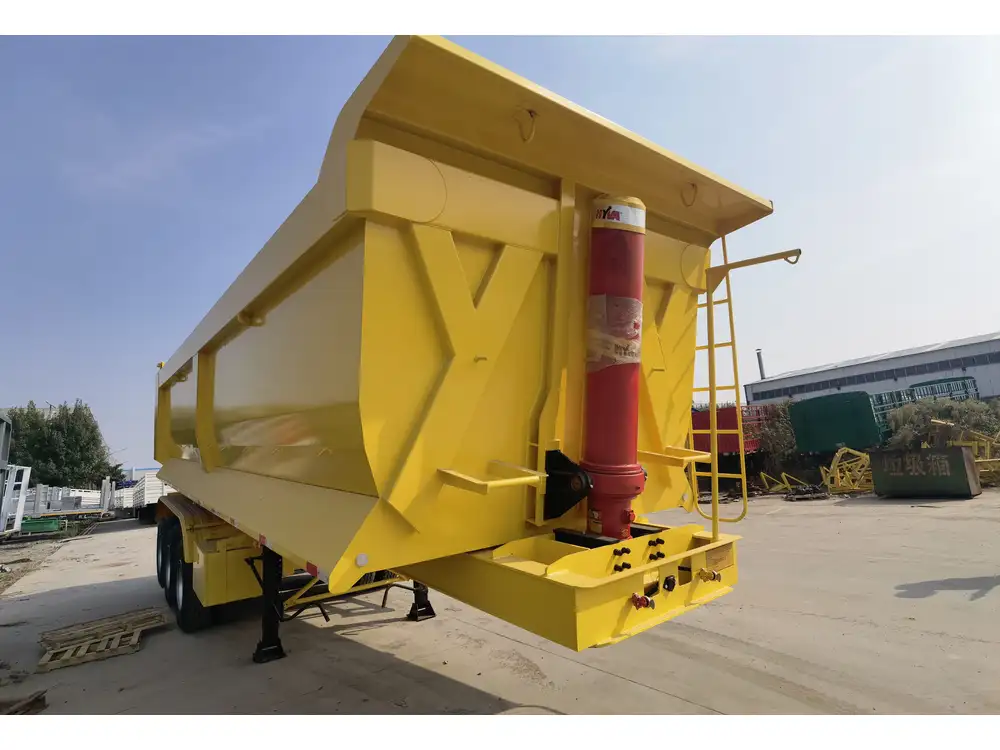When it comes to logistics, maximizing efficiency in load transportation is crucial for businesses across various sectors. This understanding leads to a common question among transport professionals and logistics enthusiasts alike: how many wagon loads fit in a 53-foot semi-trailer? A deep dive into this topic reveals not just the straightforward numbers but also the nuances that could influence decisions in loading and transport.
The Specifications of a 53-Foot Semi-Trailer
To understand how many wagon loads can be carried in a 53-foot semi-trailer, it’s imperative to first grasp the trailer’s specifications.
| Specification | Details |
|---|---|
| Length | 53 feet (16.15 meters) |
| Width | 8.5 feet (2.59 meters) |
| Height | 13.5 feet (4.1 meters) |
| Maximum Payload | 45,000 to 50,000 lbs (20,412 to 22,680 kg) |
| Volume Capacity | Approximately 3,800 cubic feet (107.2 cubic meters) |
These specifications set the stage for understanding how this transport solution can effectively replace or incorporate wagon loads.
Defining a Wagon Load
Traditionally, a “wagon load” refers to the volume or weight a wagon can safely carry. Although wagon designs may vary widely, a standard freight wagon might carry approximately 1,500 to 2,000 lbs (using a traditional horse-drawn context) or may be based on a rail car, which often can accommodate more considerable amounts.
To calculate the total number of wagon loads that could be transported by a 53-foot semi-trailer, we must standardize our definition of a wagon load based on modern scales, typically applicable in the logistics and transportation industry today.

Calculation: Wagon Loads in a 53-Foot Semi-Trailer
Weight Capacity Calculation
Given that a 53-foot semi-trailer can carry approximately 45,000 lbs, we use two typical wagon load limits for this calculation:
- Wagon Load A: 1,500 lbs
- Wagon Load B: 2,000 lbs
For Wagon Load A (1,500 lbs):
[ \text{Number of Wagon Loads} = \frac{45,000 \text{ lbs}}{1,500 \text{ lbs/wagon load}} = 30 \text{ wagon loads} ]
For Wagon Load B (2,000 lbs):
[ \text{Number of Wagon Loads} = \frac{45,000 \text{ lbs}}{2,000 \text{ lbs/wagon load}} = 22.5 \text{ wagon loads} ]Hence, based on weight, a 53-foot semi-trailer can theoretically carry anywhere from 22 to 30 wagon loads.
Volume Capacity Consideration
A fully loaded semi-trailer is not only constrained by weight but also by volume. The cubic volume of a standard wagon can typically vary, but we can approximate:
- Standard wagon dimensions: 3 x 3 x 3 feet (27 cubic feet)
Using the volume for our calculations:
[ \text{Total Volume of a 53-Foot Trailer} = 3,800 \text{ cubic feet} ]Volume per Wagon Load:
[ \text{Number of Wagon Loads} = \frac{3,800 \text{ cubic feet}}{27 \text{ cubic feet/wagon load}} \approx 140.74 \text{ wagon loads} ]Thus, regarding volume capacity, a 53-foot semi-trailer can accommodate about 140 wagon loads.

The Balancing Act: Weight vs. Volume
In real-world scenarios, the limiting factor often depends on the combination of both weight and volume. For instance, if the cargo is particularly dense but does not fill the volume rectangle of the trailer ideally, then weight will likely limit the payload. Conversely, lightweight shipments filling the capacity of the trailer could lead to underutilized weight limits.
Factors Influencing Load Efficiency
Cargo Variety: Different types of cargo will alter the effective number of wagon loads transported. Heavier items, like machinery parts, will naturally skew the weight calculations.
Distribution of Weight: Proper weight distribution is integral for safety and legal compliance during transport. Oversized or heavy items should be properly distributed to avoid overloading any single axle.
State and Federal Regulations: Variations also exist based on regional laws concerning the maximum allowable weight and transport regulations. It’s vital to stay informed about these rules to avoid penalties.
Loading Techniques: Efficient loading practices, including the use of pallets, can significantly influence how well a semi-trailer is utilized. Ensuring the space is filled thoroughly can lead to improved cost-effectiveness.
Benefits of Understanding Load Capacities
Understanding the load capacities of a semi-trailer doesn’t merely help in determining the number of wagon loads it can carry; it has broader implications related to:
Cost Efficiency: Maximizing trailer loads helps in reducing the cost per unit transported.
Routing Optimization: Knowing exactly what can fit into a trailer allows for better planning and scheduling.
Inventory Management: An understanding of transportation limits can influence how inventory is managed within warehouses.

Comparison with Other Trailer Types
It’s critical to note that while 53-foot semi-trailers offer impressive capacity, alternatives may serve different operational needs:
| Trailer Type | Length | Typical Payload (lbs) | Volume Capacity (cu ft) |
|---|---|---|---|
| 48-Foot Semi-Trailer | 48 feet | 42,000 to 46,000 | 3,500 to 3,600 |
| Flatbed Trailer | 48-53 feet | 47,000 to 50,000 | 3,800 |
| Reefer Trailer | 53 feet | 44,000 | 3,800 |
This comparison illustrates that while a 53-foot semi-trailer might hold larger volumes or weight, it’s essential to evaluate the specific needs of each transport situation.
Common Misconceptions About Semi-Trailer Capacity
Weight Only Concerns: Many assume that only the weight matters, neglecting the importance of volume.
Uniform Cargo Assumption: A common miscalculational error involves assuming uniformity in cargo type, which doesn’t account for variability in density and size.
Disregarding State Limits: Regulatory issues can diminish the number of effective loads transported if not adequately considered.
Conclusion
In summation, determining how many wagon loads can fit in a 53-foot semi-trailer involves a careful balance of both weight and volume considerations. Through our calculations, we understand that it can accommodate between 22 to 30 wagon loads based on weight, and potentially up to 140 in terms of volume, depending on the specifics of the cargo being transported.
This insightful exploration not only clarifies the transport capacity of a widely used semi-trailer but also deepens the knowledge needed for better logistics management. Lastly, by keeping this information at the forefront, companies can ensure they are both efficient and compliant with all necessary regulations, optimizing their operations to meet the demands of modern transportation needs.



